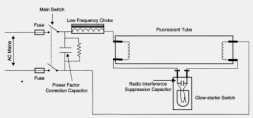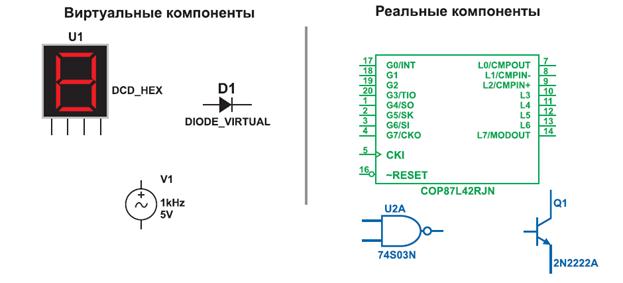Table 22.5 - Common Variants of Fluorescent Tubes
To 'strike' a fluorescent tube, its gas filling (usually argon or krypton) must be ionised by a voltage between its cathodes that is slightly higher than that required to maintain normal discharge. These electrodes may be coated with an oxide (e.g., barium oxide) to improve thermionic emission. If a suitable voltage is applied between the two electrodes a discharge strikes between them and the mains voltage is then sufficient to maintain the discharge. This occurs in low pressure so that the lamp will function at a comparatively low temperature and so will not affect the fluorescent coating. The electrons from the electrode collide with the mercury atoms. This dislodges an electron from the atom making the mercury atom a positively charged ion. As the dislodged electron returns to the influence of the ion (i.e. the electron changes from one energy level to another) a certain amount of electromagnetic radiation (i.e. a photon) is given off in the form of ultra-violet light. These rays activate the fluorescent coating and the luminous surface provides a glare-free efficient light. Two common methods are used to start the tube glowing: (a) The Switch-start Circuit, (b) The Transformer Quick-start Circuit. A typical switch-start circuit is found in Figure 22.4. The starting action is initiated by a 'glow' type starter switch connected between the opposite ends of the tube. It contains two bimetallic electrodes in a small glass tube filled with Helium that prevents oxidation of the electrodes. When the supply voltage is applied to the circuit (ideally 220V), the entire voltage appears across the starter switch. A glow discharge occurs between the starter's contacts, which quickly heat up, bend and touch each other. This allows current to flow through the lamp cathodes which will cause the tube ends to glow before the tube actually strikes. The tube strikes when the starter switch re-opens as it cools down during its closed (non-glow) period. When the starter switch opens, it interrupts an inductive (choke) circuit which produces a surge voltage (approximately 700 to 1000V, which can be about 3 to 4 times the applied voltage) across the tube which then 'strikes'. The tube glows brightly now and the reduced arc voltage across it is not sufficient to re-start the glow discharge in the starter; hence its contacts remain open. The voltage falls to about 120 V due to the effect of the supply frequency (normally 50 Hz) that causes a rise in impedance of the choke (as the inductive reactance XL = 2ITfL). If a d.c. source is used then a ballast resistor (which may be an incandescent light) must be used. Thermionic emission is now maintained by ionic bombardment. In fact, in the normal operating condition the starter switch can be unplugged from its bayonet cap base and the lamp will function normally. The tube will not, of course, re-strike after switching off without the help of the starter.
|





